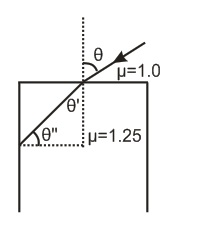Q.
Consider the situation shown in the figure. Here $\theta $ is the maximum angle for which the light suffers total internal reflection at the vertical surface. Then $sin \theta $ will be:-

NTA AbhyasNTA Abhyas 2020Ray Optics and Optical Instruments
Solution:
